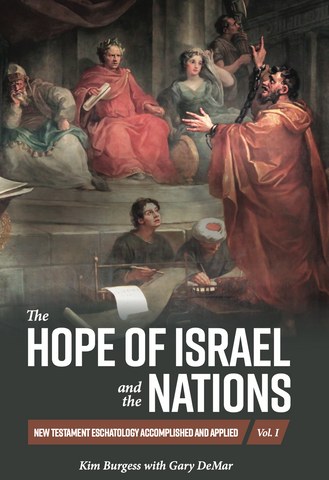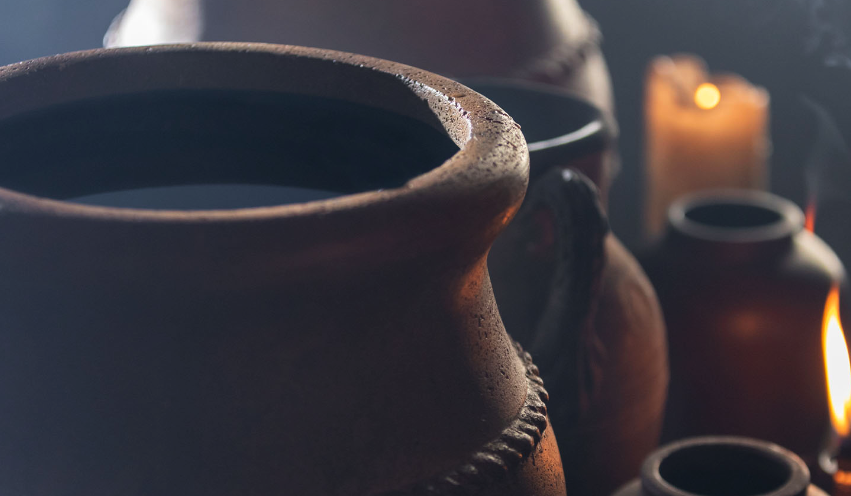When is a miracle not a miracle? Answer: When it is a sign. This is not simply an exercise in semantics; it is an important theological point. Our English Bibles often treat the two words as synonyms, but this is not at all accurate. The “miracles” that Jesus performed were not merely supernatural events to amaze first-century Jews, they were intended to point to Him as the fulfillment of all that the Old Testament prophesied. “Jesus’ miracles are never simply naked displays of power, still less neat conjuring tricks to impress the masses, but signs, significant displays of power that point beyond themselves to the deeper realities that could be perceived with the eyes of faith. Jesus himself in this Gospel [John] refers to his miracles as and to his other activity as his ‘work’ or ‘works.’”[1] A familiar passage from John’s gospel is a prime example of this principle and often misunderstood by modern readers.

The Hope of Israel and the Nations
The reader and student of the Bible must first understand the content of the New Testament writings in terms of how those in the first century would have understood it. The New Testament is written against the background of the Old Testament. The shadows of the Old were fulfilled in the reality of the New. All the rituals and ceremonies were fulfilled in Jesus. The same is true of the temple, land, blood sacrifices, the nature of redemption, the resurrection of the dead, the breaking down of the dividing wall dividing Jews and Gentiles, and so much more. The New Testament's emphasis is on the finished work of Jesus and its application, not only to that Apostolic generation but to the world today.
Buy NowIn John 2, we read of the well-known event where Jesus turns water into wine. I am going to assume that most readers are already convinced that wine actually means wine, not grape juice. The context and the Greek are emphatic on this, so I will not belabor the point. Notice that the passage begins, “On the third day…” This textual clue is not to be overlooked. Commentaries seek to understand this phrase in light of the time indicators from chapter one. Not only is this wedding in Cana on the third day from the inauguration of His public ministry (John’s baptism, Jn. 1:29-34), but this phrase should immediately put us in the mind of Genesis 1, especially in light of the language of John 1:1-5 (In the beginning was the Word, etc.). When we flip back to Genesis 1, we find that God (i.e. Jesus) created the plants—notably fruit-bearing trees—on Day Three of creation.
Then God said, ‘Let the earth sprout vegetation, plants yielding seed, and fruit trees on the earth bearing fruit after their kind with seed in them’; and it was so. The earth brought forth vegetation, plants yielding seed after their kind, and trees bearing fruit with seed in them, after their kind; and God saw that it was good. There was evening and there was morning, a third day” (Gen. 1:11-13).
Knowing what is to follow, John is drawing our attention explicitly to Jesus as God. His miracle of turning water into wine is not meant to quench thirst but to point emphatically to Jesus as equal with God, the Creator of Genesis 1. Paul tells us the same thing in plain language in Colossians 1:16-17: “For by Him [Jesus Christ] all things were created, both in the heavens and on earth, visible and invisible, whether thrones or dominions or rulers or authorities—all things have been created through Him and for Him. He is before all things, and in Him all things hold together.” John is making the point that this Wedding Guest was much more than a magician; He held power over the created order. God made the grapevine on Day Three and Jesus transforms water into wine on “the third day,” proving that He is, in fact, God in human flesh. This “miracle” is actually a “sign,” meant to validate Jesus’ words and authority. The same God who “separated the waters from the waters” on Day Two of creation, was now standing among them, making water instantly become wine. “This beginning of His signs Jesus did in Cana of Galilee, and manifested His glory, and His disciples believed in Him” (John 2:11).
Much more is at work in this passage that is important to bring out. While we cannot go into detail in this short article, there are two other points that need to be made. Nothing in the Bible is mentioned without a reason; details are often incredibly relevant to the overall narrative. John mentions two seemingly insignificant facts in this passage that make the overall meaning so much more than simply a miracle of drink preferences. The first is the six stone waterpots that were used to collect the water; and the second is the headwaiter’s declaration to the bridegroom in verse 10.
In verse 6 we read, “Now there were six stone waterpots set there for the Jewish custom of purification, containing twenty or thirty gallons each.” These waterpots would have been used for washing the hands of the guests before they ate, as in Mark 7:1-4. The large size and number of these waterpots tells us that this wedding party is no small affair; many guests are in attendance. It is in these same waterpots, which are used for the “Jewish custom of purification,” that Jesus chooses to perform his “sign.” This is not out of mere convenience; it is of the utmost significance. Remember what Jesus told his disciples at the Last Supper, “And in the same way He took the cup [of wine] after they had eaten, saying, ‘This cup which is poured out for you is the new covenant in My blood’” (Luke 22:20). The wine of New Covenant communion is made in the waterpots of the Jewish custom. Jesus is making a clear statement with His water into wine sign.
This particular miracle signifies that there is a transforming power associated with Jesus. He changes the water of Judaism into the wine of Christianity, the water of Christlessness into the wine of the richness and the fullness of eternal life in Christ, the water of the law into the wine of the gospel… Thus the imagery of the wedding feast is used with reference to the kingdom of God (Matt. 22:1-14; 25:1-13; Luke 12:36), and the disciples in the presence of Christ are likened to wedding guests rejoicing with the bridegroom (Mark 2:19). Again, the contrast of Jesus’ message with Judaism is illustrated by the wine and the wineskins (Luke 5:37ff).[2]
This explanation makes much more sense out of the words of the headwaiter when he tastes the “new” wine: “Every man serves the good wine first, and when the people have drunk freely, then he serves the poorer wine; but you have kept the good wine until now” (John 2:10). The headwaiter is the first to taste of this miraculous wine; he has no idea from where it has come. He assumes that this is the second batch of wine—since the first batch has run out—and fully expects it to be inferior; this was normal wedding protocol, as his words to the bridegroom make clear. He has no idea that this is divine wine, made from the very hands of the Creator who made both grape and water. The wine of the New Covenant far surpasses any quality of wine that man can produce. “John’s point is simply that the wine Jesus provides is unqualifiedly superior, as must everything be that is tied to the new, messianic age Jesus is introducing.”[3] This miracle of wedding wine is much more than a magic trick for the ages. Jesus was giving a sign, a testament to His divinity and a confirmation of His earthly mission.
Now the main point in what has been said is this: we have such a high priest, who has taken His seat at the right hand of the throne of the Majesty in the heavens, a minister in the sanctuary and in the true tabernacle, which the Lord pitched, not man. For every high priest is appointed to offer both gifts and sacrifices; so it is necessary that this high priest also have something to offer. Now if He were on earth, He would not be a priest at all, since there are those who offer the gifts according to the Law; who serve a copy and shadow of the heavenly things, just as Moses was warned by God when he was about to erect the tabernacle; for, “See,” He says, “that you make all things according to the pattern which was shown you on the mountain.” But now He has obtained a more excellent ministry, by as much as He is also the mediator of a better covenant, which has been enacted on better promises (Hebrews 8:1-6).

Apologetics 101: Defending the Christian Faith
Apologetics 101 is an in-depth study of defending the Christian faith. The Greek word apologia simply means "defense," and apologetics is the art and act of giving a defense. Christian Apologetics then is the art and act of defending the Christian faith, not a proof of God in general. The Christian apologist must be ready to answer truth claims about the Bible, not claims about Hinduism, Islam, or any other false religion. The Bible makes the bold claim that Jesus is the ONLY way, and the Christian apologist must set his sights on the Bible alone, not on a defense of arbitrary theism.
Buy Now[1] D.A. Carson, The Gospel According to John (InterVarsity: Leicester, England, 1991), 175.
[2] Leon Morris, The Gospel According to John (Eerdmans: Grand Rapids, MI, [1971] 1973), 176-77.
[3] Carson, The Gospel According to John, 174-75.

